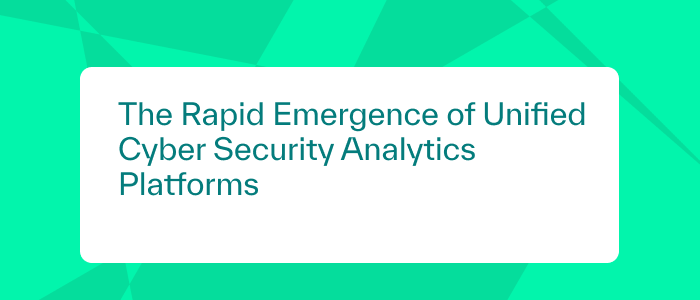
This blog article breaks down what a unified cyber security analytics platform is, the current security analytics challenges in cyber threats it addresses, the vast security analytics use cases it covers and the immense value it brings to SecOps.
But first, let’s….
Analysts spend less time conducting wasteful investigations trying to prevent a cyber attack by chasing false positives and more time finding and responding to true threats.
Engineers spend less time maintaining fragile, loosely bound systems and more time automating and maturing their SecOps program.
Decision-makers can focus less on worrying about annual SIEM data cost hikes and more on optimizing their budget to strengthen security posture.
We’ve heard this before, right? The promises of traditional SIEMs have often fallen short. These legacy solutions, designed for a simpler IT era, struggle to navigate today’s complex, distributed, and interconnected environments. Security teams have grown frustrated by the limitations in handling large volumes of data and the inability to proactively defend against sophisticated threats without extensive human intervention.
Here is a list of challenges that a unified cybersecurity analytics platform addresses. Unfortunately, they have a compounding relationship.
In the simplest sense, a unified cyber security analytics platform is a big data platform purposefully designed to prevent cyber security threats that incorporates the cutting edge capabilities of data science, machine learning and artificial intelligence. Some refer to it synonymously as the next generation of SIEM, or Next-Gen SIEM. This label fairly describes the centralized and critical role a SIEM plays within SecOps.
Ultimately, a unified cyber security analytics platform is the convergence of capabilities found from siloed SIEM, XDR, UEBA, SOAR, NTA and Identity Analytics solutions—working in harmony rather than isolation monitoring user behavior. And the more advanced platforms like Gurucul include data management, streaming and optimization functions similar to Cribl.
Rather than acquiring unique tooling for various segments of the security team, unified security analytics platforms serve as a centralized tool capable of assisting a range of teams in their respective missions. Most security analytics platforms account for multi-tenancy and privacy considerations, providing Role-Based Access Control (RBAC) and data masking to ensure confidentiality and compliance. Here are a few broad use case categories most organizations would leverage these platforms for:
This is an obvious use case category given the nature of a security analytics platform. They deliver better threat detections than traditional and siloed tools, more centralized context around cyber risk for accelerated investigations and built-in automated response capabilities cutting down on response times. What’s more, these platforms are uniquely suited to help eliminate blind spots across complex hybrid cloud environments, giving analysts complete visibility for a centralized dashboard. Learn more about TDIR.
Aligning with TDIR, companies face increasing compliance and regulatory requirements as awareness of cyber risks continues to grow. Unified cyber security analytics platforms are well suited to meet the logging, reporting, auditing and alerting requirements of GDPR, HIPAA, PCI-DSS and SOX, helping companies demonstrate adherence to these standards.
The underpinning of these unified security analytics platforms is User and Entity Behavior Analytics (UEBA), a critical component to predicting insider threats before sensitive data exfiltration. Machine Learning insider threat detection models then add context to the behavioral deviations from identity and HR application data. This gives insider threat teams the benefits of security analytics the ability to monitor for security incidents and the context required to confidently open cases and work with HR and Legal to proactively mitigate true inside risks without breaking employee privacy laws. Learn more about Insider Threat Management.
With identity-based attacks being the leading cause of most breaches, a growing cybersecurity approach focuses on this threat, and unified cybersecurity analytics platforms are well-equipped to support this use case. They are able to deliver real-time insight into the identity attack surface—giving security teams visibility into over-privileged, rogue, orphaned, or compromised accounts while monitoring users for security events.
Furthermore, unified security analytics platforms help security analysts detect and respond to identity-based attacks before they compromise critical data. Helping them adopt a proactive stance against identity threats with capabilities like visibility into identity governance, risk scoring informed by identity-based indicators of compromise, and automated response playbooks. Learn more about ITDR.
Gurucul is the only cost-optimized security analytics company founded in data science that delivers radical clarity about cyber risk. Our REVEAL security analytics platform analyzes enterprise data at scale using machine learning and artificial intelligence. Instead of useless alerts, you get real-time, actionable information about true threats and their associated risk.
The platform is open, flexible and cloud native. It conforms to your business requirements so you don’t have to compromise. Our technology has earned us recognition from leading industry analysts as the most Visionary platform and an Overall leader in product, market and innovation. Our solutions are used by Global 1000 enterprises and government agencies to minimize their cybersecurity risk.
